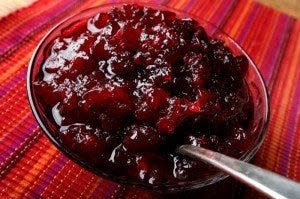Jellied or whole? Thank this lucky soil for whatever Thanksgiving cranberry sauce you eat
Editor's note: This story originally published in 2019.
The leaves have fallen from the trees, so you know it’s time for that annual search.
No, I’m not talking about the search for the perfect presents for those impossible people on your list who always buy themselves great gifts right before the holidays. And I’m not talking about the never-ending slog through the driving slush to find just the right Christmas tree — that looks exactly like the first one you looked at two hours earlier.
No, this search is even more important and can be even more exasperating. The search to find a few cans of cranberry sauce in the grocery store just in time for Thanksgiving dinner.
If you’re the household food shopper, you know how maddening it can be. This year, will it be with canned veggies or baking supplies? Might it be in the special display next to the check-out counter? Now that we’re in the era of the gigantic shopping center, maybe the cranberry sauce is with automotive supplies as a nod to the impending trek over the river and through the woods ...
But regardless of the heights of the challenge, it’s always worth it. After all, Thanksgiving without cranberry sauce is a bit like the Kentucky Derby without bourbon.
You may like: Gluten-free or vegetarian Thanksgiving guests? Here are 5 dishes to save the holiday
The cranberry is an amazing plant that belongs to an amazing group of species that provide us with superbly edible fruit and stunning blooms. The family Ericaceae includes rhododendrons and azaleas, blueberries and cranberries among others. And as diverse as the group is, all its members share one common cultural requirement that can frustrate the dickens out of MidAmerican gardeners — acid soil. Put an azalea or cranberry in a pH 8.0 soil and you’ll be treated to the slow demise of what could have been a stunning show — and a delectable Thanksgiving dish.

If you look for native Ericaceae in North America, you’ll find most of them calling the Northeast or Pacific Northwest home — exactly where you find acidic soils. The limestone of Kentucky makes growing Ericaceous plants an exercise in constant soil amendment and frequent failure. Some can make it work but it ain’t easy, to say the least.
The acid soil requirement in cranberry and its relatives is an interesting bit of soil chemistry and plant biochemistry. We all know that nitrogen is one of the most important nutrient elements for healthy plant growth. And most plant species around the world absorb most of it in the form of nitrate (NO3-), a negatively charged soil ion. The problem is that plants can’t use nitrate directly. They absorb it efficiently but then promptly convert it to the usable nitrogen form of ammonium (NH4+), through the function of a very elegant enzyme named nitrate reductase contained in the plant’s roots.
So what does this have to do with anything? Well, it turns out that our cranberry friends and their relatives somehow evolved without the essential nitrate reductase enzyme in their roots. They can absorb nitrate but can’t use it in metabolism. They have to absorb their nitrogen in the form of ammonium — all ready to use.
More recipes: Cook like a Louisville chef this Thanksgiving with these 7 recipes
The challenge: in alkaline soils, like the soils we have in Kentucky and most of the middle part of the country, the vast majority of nitrogen occurs in the form of nitrate. And in soils that contain nitrate but little to no ammonium, cranberries, blueberries, rhododendrons and azaleas are, for the most part, a non-starter. Move to New England or even the acidic soils of the Appalachian region of eastern Kentucky, and you’re in business.
So for this Thanksgiving season I suggest when we all sit down to the big feast and give thanks for all we have, we should give a nod of thanks to the soil chemistry and plant biochemistry gods, along with those industrious cranberry growers up east who make it possible for us to all sit around the Thanksgiving table with family and friends, join hands in unison ... and spiral immediately into a no-holds-barred argument over the biggest question of the day — jellied or whole!
Yew Dell Botanical Gardens, 6220 Old Lagrange Road, yewdellgardens.org.
This article originally appeared on Louisville Courier Journal: Thanksgiving 2020: Why growing cranberries is tricky soil business
